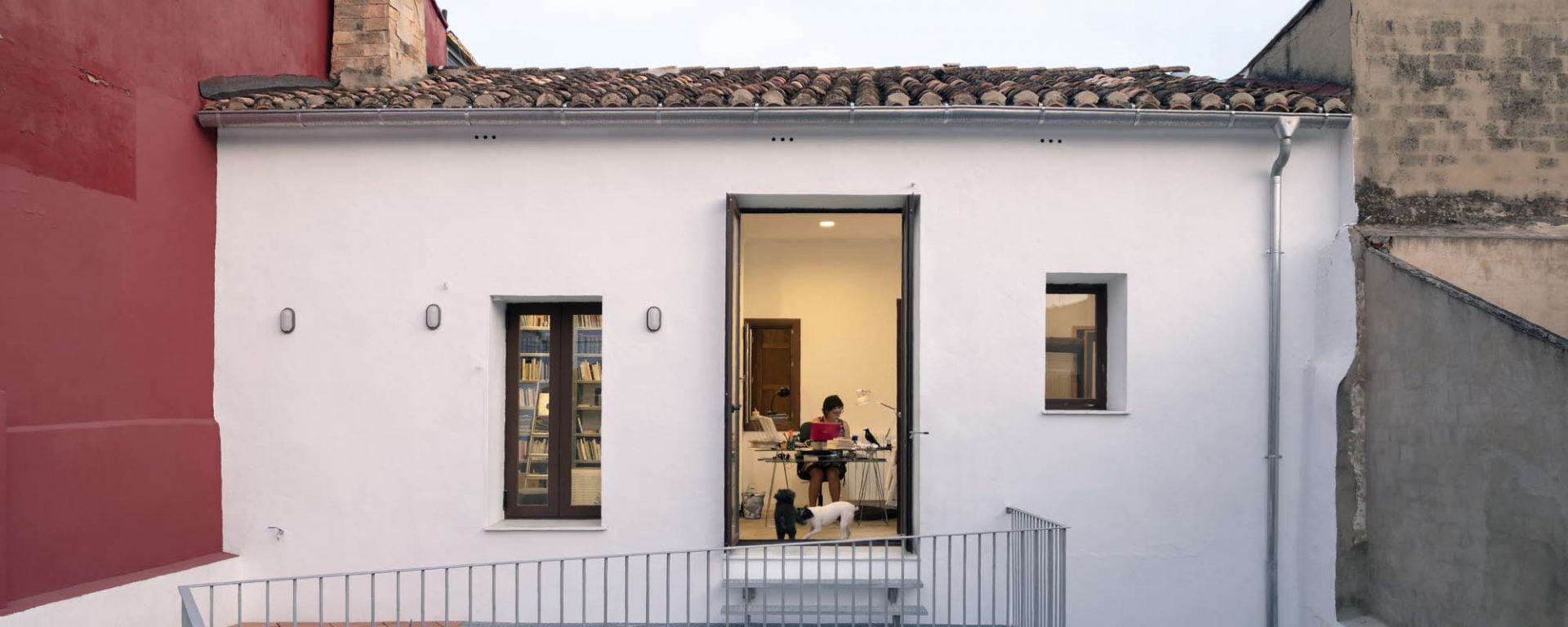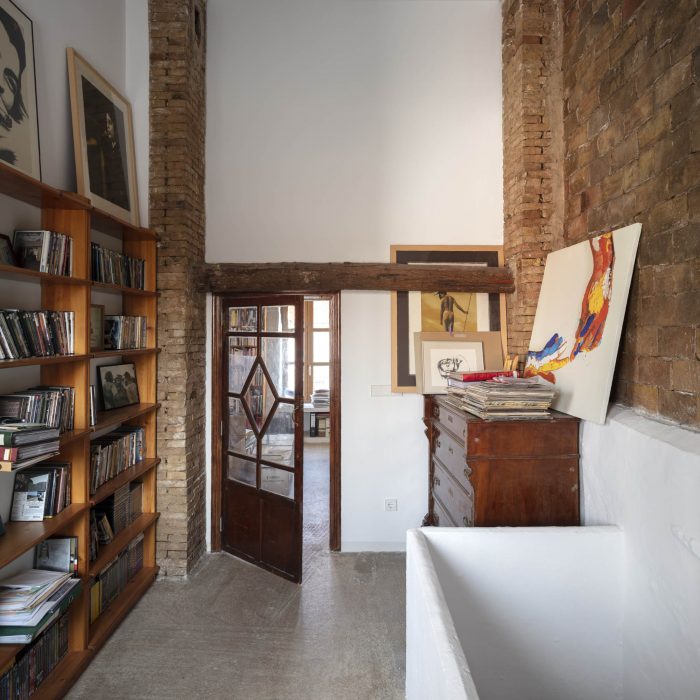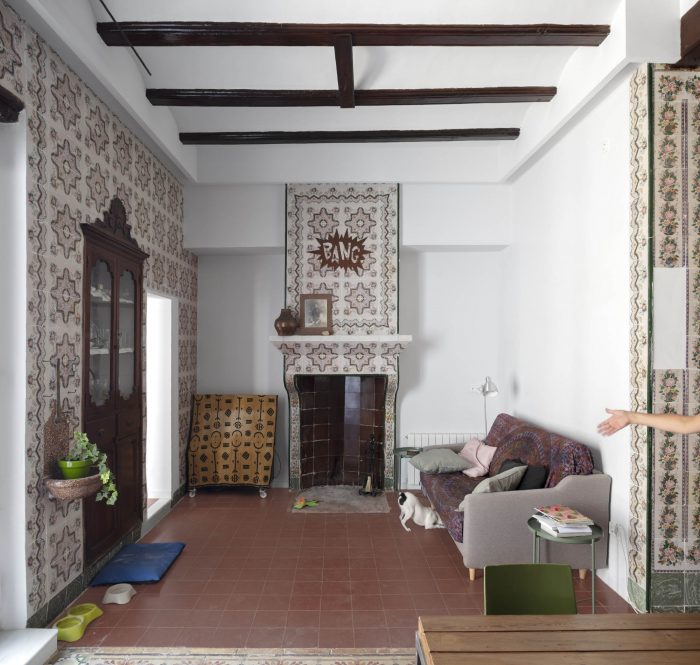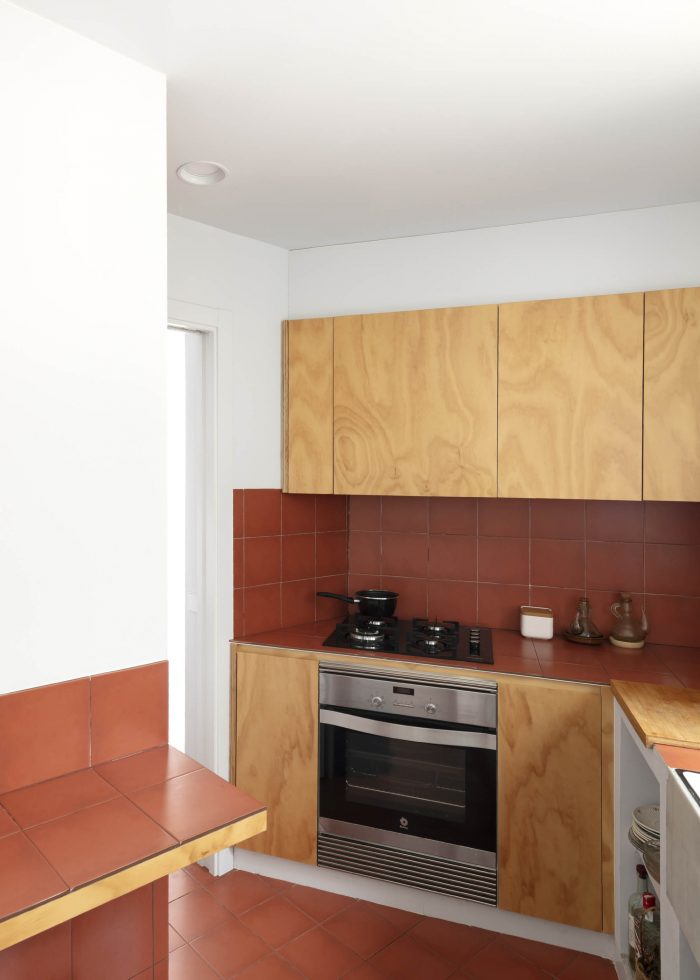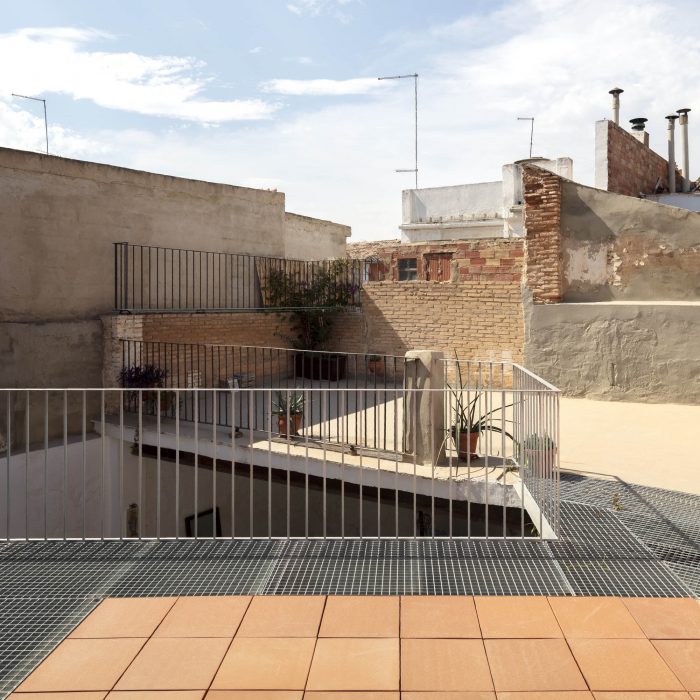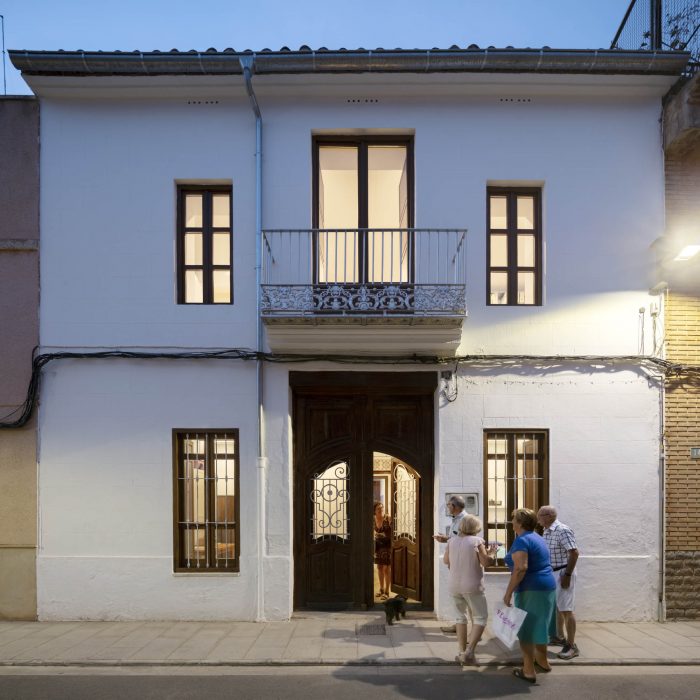对建筑和城市的理解是对生活的支持,是产生并使不同的关系和生活方式成为可能的情景,这是指导我们从Fent Estudi进行干预的原则。我们接近康复和再生的方式,这几乎构成了我们在城市和家庭层面的全部经验,回应了一个尊重的方法,一个基于倾听的分析和干预,强调剩下的东西。在这个过程中,居民是主角,所有的项目努力都是为了建立一个独特的生活方式的独特家园。
Understanding architecture and the city as a support for life, as a scenario that generates and makes possible different relationships and lifestyles, is the principle that guides the interventions we make from Fent Estudi. The way we approach rehabilitation and regeneration, which constitutes almost the whole of our experience at both urban and domestic levels, responds to a respectful approach, a listening-based analysis and an intervention that emphasizes what remains. During this process the inhabitants are the protagonists and all the project effort goes towards building a unique home for a unique way of life.
该提案来自于与这两个项目元素的持续对话。既有的房子,有它的强加和机会,而居住在这里的家庭,有他们的习俗、生活方式、希望和期望。在这个棱镜下,每一次的介入都是不同的,因为房子的位置和居民的逻辑,托尼和努里亚。一个不断决定什么是剩余的,什么是不可缺少的,可修改的或无法挽救的过程。这个过程也是一个逐步裸露的过程,是一个与结构、路线、视觉、灯光、水流、气味、声音、反射、物体……与一切赋予这个地方身份和意义的东西相遇的过程。我们面临的挑战是如何赋予一个匿名的、乡土的建筑以高度的价值,在这里,它的真诚是建设性的,它的真实性沉积在它的角落、陶瓷、脚印、阴影和沉积物中,显示出一个房子的记忆,它已经被感受、呼吸、生活……。干预不是主角,而是将原有的空间性和物质性置于高价值的位置,使其适应新的居住要求。
The proposal arises from the continuous dialogue with these two projective elements. The pre-existing house, with its impositions and opportunities, and the family who will inhabit it, with their customs, their way of life, hopes and expectations. Under this prism, each intervention will be different, as a result of the logic of the house-location and of its inhabitants, Toni and Núria. A process of constant decision on what remains and what is indispensable, modifiable or unable to be salvaged. A process also of progressive nudity, of discovery and encounter with structures, routes, visuals, lights, currents, smells, sounds, reflexes, objects … with everything that gives identity and meaning to the place. The challenge we face is to put on a high value an anonymous, vernacular construction, where its sincerity is constructive and its authenticity is deposited in its corners, ceramics, footprints, shadows and sediments, showing the memory of a house that has been felt, breathed, lived … The intervention will not be the protagonist, but something to place on a high value the pre-existing spatiality and materiality, adapting it to the new requirements of habitability.
这种建筑干预的逻辑被带到了房子的摄影中。我们选择充满生命力的图像,其中居民的存在是最基本的。正如Xavier Monteys在Casa Collage所言,我们试图避免 “那些在建筑出版物中展示的家庭内部图像,似乎系统性地回避了人和他们的用具的存在;仿佛这些内部已经是完整的,没有必要或没有可能被布置或居住。”
This logic of architectural intervention is taken to the photography of the house. We opt for images full of life, in which the presence of the inhabitants is fundamental. As Xavier Monteys says at Casa Collage, we try to avoid “those images of domestic interiors displayed in architectural publications that seem to systematically evade the presence of people and their utensils; as if these interiors were already complete, without the need or without the possibility of being furnished or inhabited.”
在托伦特的历史中心,我们可以找到 “Ca La Maña”,这是一座建于1920年的房子,因其具有巴伦西亚传统房屋的类型学(住宅、天井、平台)而被列为地方相关财产。最初的方案经过多年的修改,将厨房和卫生间的某些不恰当的空间进行了粘合,大大减少了天井的面积。
In the historic center of Torrent we find “Ca La Maña”, a house built in 1920 that has been classified as a Local Relevant Property because of its typology of a traditional Valencian house (dwelling, patio, platform). This original scheme had been modified over the years with the adhesion of certain improper volumes to house the kitchen and bathroom, significantly reducing the patio area.
该项目考虑进行修复,以尊重该物业的类型学,其围护结构和消除内院中存在的不当元素。厨房被作为一个独立的组成元素,并从形式上将其与原建筑区分开来,从更现代的角度解决了类型/功能结构的关系。
The project contemplates a rehabilitation action that respects the typomorphology of the property, its envelope and the elimination of the improper elements existing in the inner courtyard. The kitchen is projected as an independent compositional element and formally to distinguish it from the original building, solving the typological / functional structure relation from a more contemporary view.
整个干预的目的是尊重瓦伦西亚传统房屋的类型形态和特征。
The whole intervention aims to respect the typomorphology and features that characterize the traditional Valencian house.
建筑师:Fent Estudi Coop V
面积:1905平方英尺
年份:2018年
摄影:Milena Villalba
制造商:AutoDesk, Baxi, Fontini, VIVES CERAMICA, Adobe Systems Incorporated, Carpintería Muycarp, Derribos Andrés, Ferroli Europa, Grupo MCI – One Light, Viciano & Rivera
城市:TORRENTE
国家:西班牙
Architects: Fent Estudi Coop V
Area: 1905 ft²
Year: 2018
Photographs: Milena Villalba
Manufacturers: AutoDesk, Baxi, Fontini, VIVES CERAMICA, Adobe Systems Incorporated, Carpintería Muycarp, Derribos Andrés, Ferroli Europa, Grupo MCI – One Light, Viciano & Rivera
City: TORRENTE
Country: Spain

